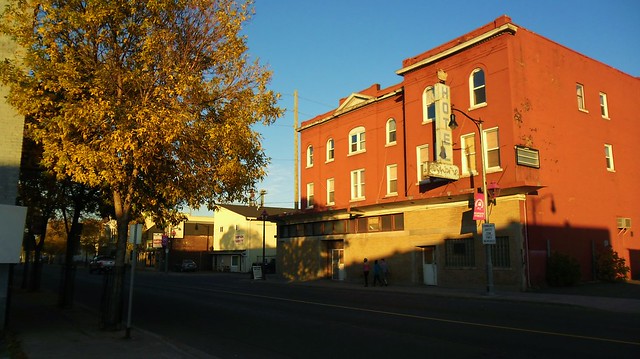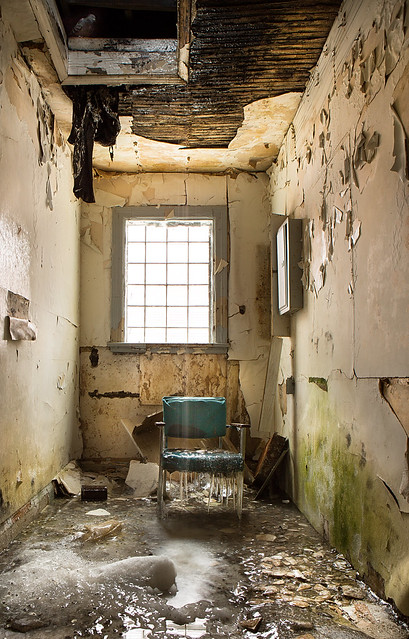Quote:
Originally Posted by Private Dick

The thing with those buildings is that they were built with VERY high quality materials compared to what was used in postwar American and obviously what we use today. They are NOT rotting.
|

Looks can be deceiving.

After three years of vacancy, this is it's third floor. It still doesn't even look too bad, as far as the exterior goes, a couple spots with peeling paint and the giant crack in the south wall (the plaster facade put over the brick is peeling off) is about all that appears wrong with it. But the roof will need to be replaced, and the structure will have to be majorly reinforced if the building is to ever be reused. It would be prohibitively expensive.
And for what? The cornice was mass-produced in a local foundry, they would put out yards of it and builders would trim to fit. Lots of buildings in the area have identical cornices. That brickwork is nothing so complex that it can't be replicated today, it isn't even that rare a skill, it's just time consuming, and time is money. It's easier to have them lay one brick on top of another than to take time to properly position things and make an arch for a window, especially since arched windows aren't in style right now.
If a building is maintained properly, it
can last forever. Any building.
Old buildings are drafty, poorly fenestrated, and not reflective of how people move throughout buildings. We had to close an old hospital because it was too difficult to adapt the building to modern health care needs. The walls were solid concrete. It took a year to demolish it, and it was only 6 storeys. But that solidity was what prevented it from being saved. It couldn't be renovated to suit other needs, and its operating room was restricted to the dimensions and flow of an operating room in the 1930s. It just wasn't adequate anymore. Other historic buildings might be lacking technology options. My high school was closed not because the building wasn't sound, but because the cost of equipping it for modern educational needs was simply too much for a building so poorly laid out (it had 10 separate levels in 4 sections, built over 80 years).



